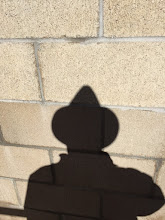Line of Sight 2.15.2024
We can read about historical events, we can hear about them, and we can examine artifacts from the past, but we don’t see or otherwise experience the past. There is no line of sight that allows us to see a past event. We may read a speech but we do not hear a historical person. We may survey a situation, but we do not experience the preliminaries, the outcomes, or the actuality of what occurred. All historical understanding, regardless of your ideology or agenda is mediated, secondary, tertiary, or even further removed. And it comes to you interpreted. It is participatory to the extent that we trust those who have mediated the past to us and for us. Our job as interpreters is to examine how past events are mediated, interrogating those primary, secondary, and tertiary sources, and weighing all interpretations to arrive at the most probable. Then after we have done our homework, we are positioned to make judgments. Those judgements are posterior to and exterior of the events they describe. They are a part of the tapestry of interpretive mediation through which the past is available to us. Even a video of a past event is an interpretive preservation of an event—not the event itself.
One of the jobs of interpretation; Biblical, Historical, or Theological is to disabuse practitioners that there is a magical line of sight to the past, rather than overarching interpretive strategies. Whether or not this agrees with your ideology, principles, or personal totem is irrelevant. You cannot see, hear, touch, taste, or smell the past. You can only observe second-hand through the mediation of others.
Facts are temperamental and stubborn. Left to its own devices data is resistant to manipulation. Only rarely and comparatively recently has historiography been thought of as a matter of facts and data. For virtually all our collective human history, story has been the means for communicating what we now smugly call “history.” Stories require storytellers and storytellers have several ways of manipulating the arc of their story to accomplish their purposes. One of the most duplicitous turns of the storyteller is assuring his readers or auditors that he has broken the spell of the past and can provide direct, line of sight access to history. This manipulative historical turn is usually known as “the real truth.” Or its practitioners malign other storytellers by assuring their audience that the other guy’s story is “revisionist.” My story is what “actually happened.” My story is authentic. Their story is inauthentic. To-ma-to. To-mah-to. Blah, Blah, Blah. Everyone is telling a story. Some could be lying. All may be lying. The one common element, the one thing all tale-tellers share is that no one has is line of sight. History comes to us in some mediated form. If we are to learn from history we must engage in critical analysis of as many stories as possible to get the best glimpse of the past that we can, considering the restraints of normal, historical processes; in this case, also known as reality. We engage in this adventurous hermeneutic because we believe.
For Christians, the Bible is our baseline storybook. We measure all other stories against this storybook of stories about God’s saving engagement with His fallen creation. For us, the Biblical story is the perfect test case for how we view all other stories in the historical inventory. We don’t have any more line of sight to Biblical history than anything that precedes or follows. Our hermeneutic of Scripture and our hermeneutic of History should be virtually the same, except for acknowledging the inspired, authoritative nature of Scripture. For both, we should use every available tool to help us understand. And then the Christian will use scripture to measure both the veracity and utility of the historical stories he needs to understand.
Again, all this is told to us or shown to us, because we do not have access to the past—only reports of the past. Some, at this juncture, might choose historical nihilism which is basically the sulking and desperate declaration that nothing I did not witness actually happened. These sentiments might work in chic academic settings or in the company of the similarly confused, but for those in the real world, this kind of historical nihilism is just uninformed, juvenile, silliness.
The Christian contention, the contention of most rational people is that the past is knowable, and our present task is to interrogate the storytellers to determine who we can trust and who we should dismiss. As I said before some could be lying, and all may be lying. The corollaries to those statements are just as logically powerful. None could be lying. All may be telling the truth. Our job is to figure out who is trying to dupe us and who is trying to inform us. How about this: All may tell part of the “truth”. History like beauty, may after all be in the eye of the beholder.
Historical reading requires breadth, depth, curiosity, and empathy. One cannot exclude or include storytellers based on ideological kinship. If you don’t read that “historical revisionism”, as pointless as it seems, you may be missing more than someone else’s exercise in axe-grinding. You may miss facts. You may be overlooking relevant data. You may miss nuance. You may miss the parts of the story they got right by pure chance and the gravitational pull of events. And by ignoring their story you are impoverishing your own capacity to judge the story they are telling over and against the story you prefer.


0 Comments:
Post a Comment
Subscribe to Post Comments [Atom]
<< Home